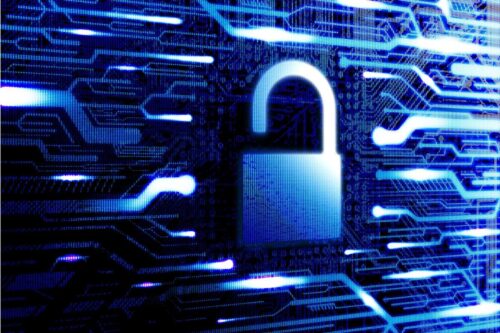Cybersecurity 101 Categories
What is WPA2 Enterprise?
WPA2 Enterprise is a security protocol used for securing Wi-Fi networks. It is an extension of the Wi-Fi Protected Access 2 (WPA2) standard, which provides stronger security than its predecessor, WPA.
WPA2 Enterprise is designed for use in enterprise or business environments where there is a need for more advanced authentication and encryption methods. It offers several key features to enhance network security:
- Authentication: WPA2 Enterprise supports the use of enterprise-grade authentication methods, such as Extensible Authentication Protocol (EAP), which allows for more robust and flexible authentication mechanisms. Common EAP methods used with WPA2 Enterprise include EAP-TLS (Transport Layer Security), EAP-TTLS (Tunneled Transport Layer Security), and PEAP (Protected Extensible Authentication Protocol).
- Individual User Authentication: With WPA2 Enterprise, each user or device connecting to the network is required to provide unique credentials for authentication. This ensures that only authorized users can access the network.
- RADIUS Server Integration: WPA2 Enterprise often relies on a Remote Authentication Dial-In User Service (RADIUS) server for user authentication. The RADIUS server acts as a central authentication server, verifying user credentials and granting or denying access to the network based on the authentication results.
- Encryption: WPA2 Enterprise uses the Advanced Encryption Standard (AES) for data encryption. AES is a strong encryption algorithm that helps protect the confidentiality and integrity of data transmitted over the network.
Overall, WPA2 Enterprise provides a higher level of security compared to WPA2 Personal (also known as WPA2-PSK), which is commonly used in home and small office networks. By implementing individual user authentication, advanced authentication methods, and encryption, WPA2 Enterprise helps ensure the confidentiality, integrity, and authenticity of wireless communications in enterprise settings.
What is required for WPA2 Enterprise?
To implement WPA2 Enterprise, you will typically need the following components:
- Wireless Access Points (APs): These are the devices that create the wireless network and handle the communication between wireless devices and the network infrastructure. The APs should support WPA2 Enterprise, including the necessary encryption algorithms (e.g., AES) and authentication protocols (e.g., EAP).
- Authentication Server: WPA2 Enterprise requires an authentication server, often based on the Remote Authentication Dial-In User Service (RADIUS) protocol. The authentication server stores user credentials and performs the authentication process for devices attempting to connect to the network. Common RADIUS servers include FreeRADIUS, Microsoft Network Policy Server (NPS), and Cisco Secure ACS.
- User Database: The authentication server needs a user database to store user credentials, such as usernames and passwords. This database can be local to the authentication server or integrated with an existing directory service like Active Directory.
- User Credentials: Each user or device connecting to the network must have unique credentials for authentication. This can involve usernames and passwords, digital certificates, or other forms of authentication credentials depending on the selected Extensible Authentication Protocol (EAP) method.
- EAP Method: WPA2 Enterprise supports various EAP methods for user authentication. The choice of EAP method depends on the specific security requirements and infrastructure. Common EAP methods include EAP-TLS, EAP-TTLS, PEAP, EAP-FAST, and EAP-MSCHAPv2.
- Certificate Authority (CA): If you use EAP-TLS or other certificate-based authentication methods, you may need a certificate authority to issue and manage digital certificates for user and server authentication.
- Network Policy: The authentication server defines the network policies that determine the conditions under which devices are granted access to the network. These policies can include access control rules, role-based access, VLAN assignment, and other parameters.
It’s important to note that implementing WPA2 Enterprise can be more complex and resource-intensive compared to WPA2 Personal (WPA2-PSK). It requires additional infrastructure components and configuration, but it offers stronger security and granular control over network access in enterprise environments.
What are the benefits of WPA2 Enterprise?
WPA2 Enterprise offers several benefits over other Wi-Fi security protocols, such as WPA2 Personal (WPA2-PSK). Here are some of the key advantages:
- Robust User Authentication: WPA2 Enterprise provides individual user authentication, ensuring that only authorized users with valid credentials can access the network. This helps prevent unauthorized access and protects against attacks such as brute-force password cracking or unauthorized device connections.
- Granular Access Control: With WPA2 Enterprise, network administrators can enforce granular access control policies. Access can be based on user roles, group memberships, or other criteria, allowing for different levels of access privileges to different user categories or devices. This enhances security by limiting access to sensitive resources and data.
- Support for Advanced Authentication Methods: WPA2 Enterprise supports a range of authentication methods through the Extensible Authentication Protocol (EAP), including strong mutual authentication using digital certificates. This enables more secure and flexible authentication mechanisms, such as smart cards, token-based authentication, or two-factor authentication.
- Centralized Management: WPA2 Enterprise utilizes a RADIUS server for authentication, which enables centralized management of user accounts and network policies. Administrators can easily add or revoke user access, enforce password policies, and monitor network activity from a central location. This simplifies administration and improves network security.
- Strong Data Encryption: WPA2 Enterprise employs the Advanced Encryption Standard (AES) for data encryption, providing robust security for wireless communications. AES is widely regarded as a secure encryption algorithm and offers better protection against eavesdropping and data manipulation than older encryption standards.
- Compliance with Regulatory Standards: Many industries and regulatory bodies require strong security measures to protect sensitive information. WPA2 Enterprise meets the security requirements of various compliance frameworks, such as the Payment Card Industry Data Security Standard (PCI DSS) or the Health Insurance Portability and Accountability Act (HIPAA), ensuring organizations can meet their regulatory obligations.
- Scalability: WPA2 Enterprise is well-suited for large-scale deployments in enterprise environments. It can accommodate a high number of users and devices, making it suitable for organizations with diverse and extensive Wi-Fi networks.
Overall, WPA2 Enterprise offers enhanced security, flexibility, and manageability, making it an ideal choice for businesses and organizations that prioritize network security and require advanced authentication and access control capabilities.
Does WPA2 Enterprise have any vulnerabilities?
While WPA2 Enterprise is generally considered a secure Wi-Fi security protocol, it is not completely immune to vulnerabilities. Here are a few vulnerabilities associated with WPA2 Enterprise:
- Implementation Flaws: Vulnerabilities can arise due to implementation flaws or misconfigurations in the network infrastructure, authentication server, or client devices. These flaws can potentially be exploited by attackers to bypass authentication or gain unauthorized access to the network.
- Weak User Credentials: If users choose weak or easily guessable passwords, they become susceptible to brute-force attacks. Weak user credentials undermine the security provided by WPA2 Enterprise and can lead to unauthorized access.
- Vulnerable EAP Methods: Some EAP methods used with WPA2 Enterprise have specific vulnerabilities. For example, EAP-TLS relies on digital certificates, and if the certificate management process is flawed or the certificates are compromised, it can weaken the security of the authentication process.
- Rogue Access Points: WPA2 Enterprise networks can be vulnerable to rogue access points, which are unauthorized APs set up by attackers to mimic legitimate networks. If a user mistakenly connects to a rogue AP, their credentials may be intercepted, allowing the attacker to gain access to the network.
- Insider Threats: WPA2 Enterprise cannot protect against insider threats, where authorized individuals misuse their access privileges or intentionally compromise the network. Insider threats may involve unauthorized sharing of credentials, misuse of administrator privileges, or intentional bypassing of security controls.
- Zero-Day Exploits: Like any security protocol, WPA2 Enterprise can be susceptible to unknown vulnerabilities or zero-day exploits. These are vulnerabilities that are not yet publicly known and can be exploited by attackers until a patch or mitigation is developed.
It’s important to note that the vulnerabilities mentioned above do not render WPA2 Enterprise ineffective. However, they highlight potential areas where security can be compromised if not properly addressed. To mitigate these vulnerabilities, it is crucial to follow security best practices, keep software and firmware up to date, enforce strong user authentication, and regularly monitor and audit the network for any signs of compromise.



